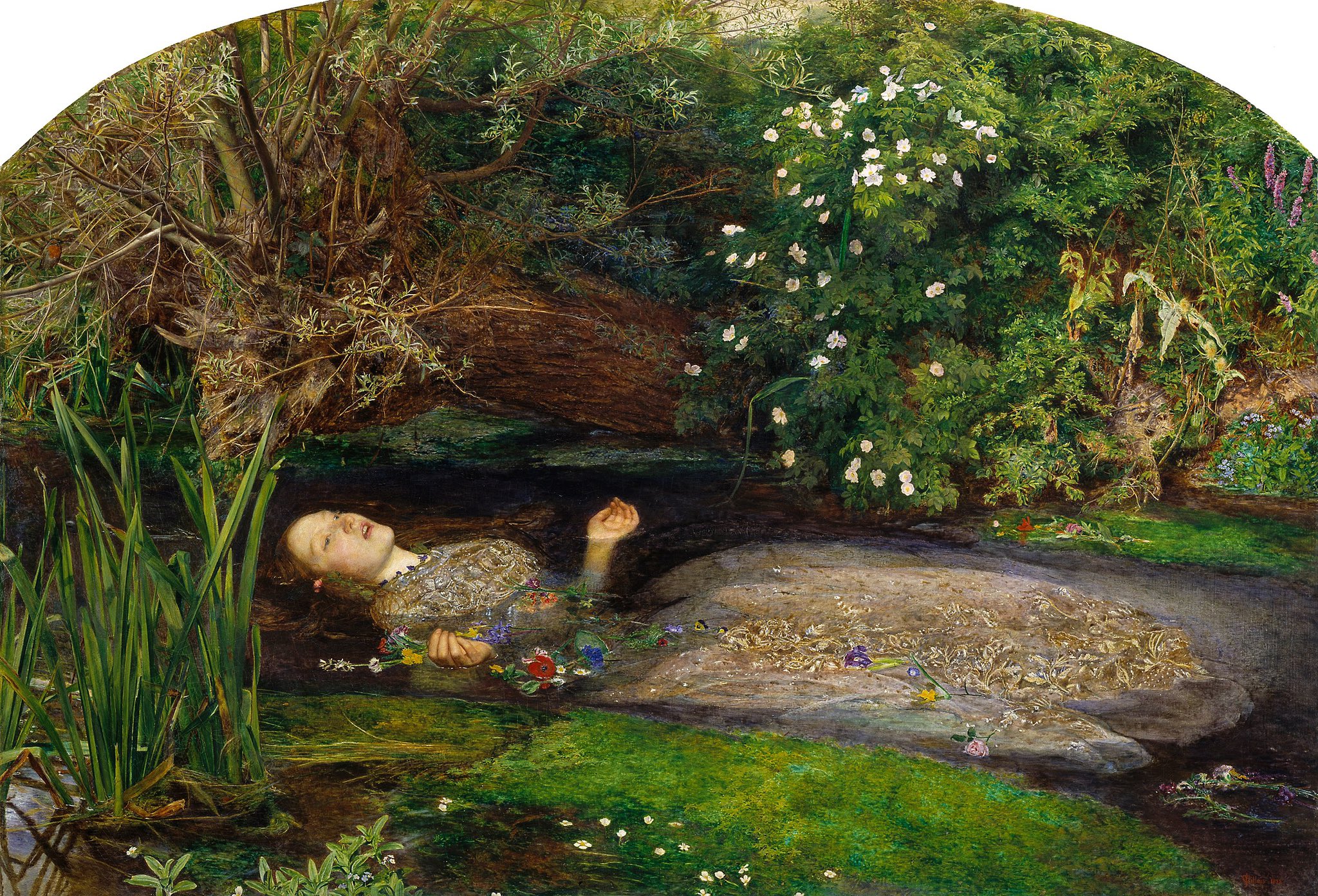95/100
Ophelia
-
Artist
John Everett Millais
-
Year
1851
-
Culture
British
-
Date of Copy
This copy took an incredibly long time. I was painting it basically leaf by leaf, because that's the level of detail that's presenet in the original. However, I still did it faster than Millais did--he took five months, painting 11 hours a day 6 days a week, all outdoors and on location.
Millais was part of the Pre-Raphaelite Brotherhood, which valued realism in the form of painstaking observational detail. That is why this background is so intricate. (They also valued bright colors, which is why the green is so vibrant.) Looking back, I wonder if their effort with background detail was worth it. It takes forever, is kind of a slog, and most people probably don't even really notice it. All the focus gets taken by Ophelia's face instead.
When the painting was first exhibited, it was disliked. A critic described her as "soused in a weedy ditch". Today, it reads as a romantic scene that's elevated from reality, but I guess back then it was so highly realistic that it reminded people of dairymaids and dirty streams. A persistent theme in this series has been that times and tastes change.
The model for this is Elizabeth Siddal, a painter in her own right and frequent muse of the Pre-Raphaelites. At the time of this painting, she was 19 and posing in a bathtub fully clothed. The water got cold, and she got sick afterward. Her father made Millais pay her medical expenses.
This depicts Ophelia, the sad damsel in Shakespeare's play Hamlet who drowns herself. The Pre-Raphaelites loved sad damsels. Western culture in general kind of loves sad damsels. Suffering women are seen as the most virtuous. It's a losing situation for us. I think this painting is gorgeous, but I hope I can look at it without internalizing the message that I'd be at my most beautiful drowning in a river too.
My last 10 entries were redos of paintings I'd attempted at the beginning so that I could compare progress and give the original artworks their proper due. You can see my first swing at Ophelia at entry 10.
Reference image from Wikipeda. This painting now hangs at the Tate.

